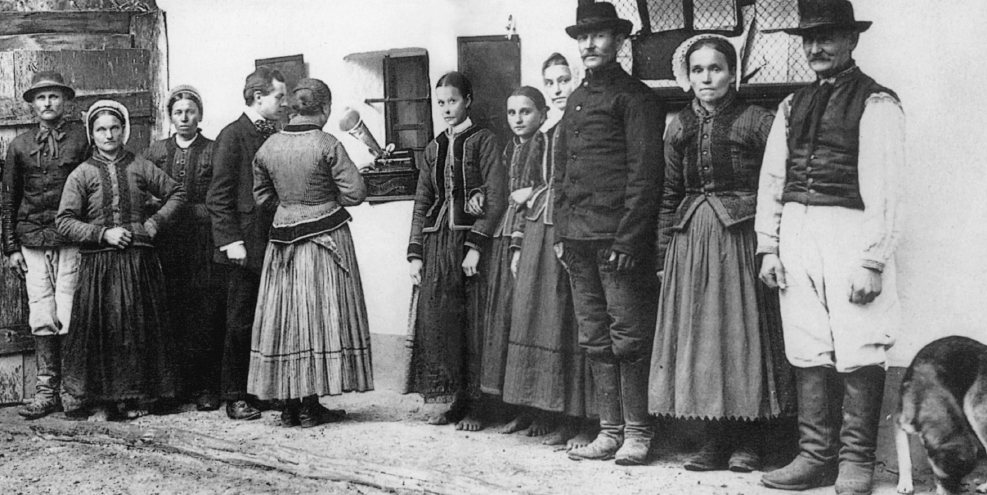2 | Folk Music, Nationalism, and Modernism: Béla Bartók
“The right type of peasant music is most perfect and varied in its forms. Its expressive power is amazing, and at the same time it is devoid of all sentimentality and superfluous ornaments. It is simple, sometimes primitive, but never silly. . . . A composer in search of new ways cannot be led by a better master.”
Growing up in Hungary in the 1890s, the young Béla Bartók was first swept away by the international avant-garde leaders Debussy and especially Richard Strauss. Later in his career he was also influenced by his close contemporary Stravinsky. Bartók was, however, a man of multiple careers — pianist, educator, and musicologist as well as composer. His deep commitment to folk music — much deeper than Stravinsky’s — and his professional involvement with it as a collector had a decisive impact on his music. Many would say that Bartók was more successful than any other composer in integrating folk music into classical music.
Folk music, especially that of his native Hungary, ensured that Bartók’s music would rarely become as abstract as much modernist music was. There is an earthy feel to it; even at its most dissonant, there is an infectious folk-dance swing or a touch of peasant melody. This is true even in works of his most avant-garde period, about 1925–35. The austere String Quartet No. 4 of 1928 is often regarded as Bartók’s masterpiece.

Bartók collecting folk songs: He was using recording equipment just a few years after commercial recordings began coming out. Around 1906, these rural Hungarians seem less amazed by the primitive phonograph than by the camera. Apic/Getty Images.
After that time Bartók’s music gradually became more accessible, and the references to folk songs in it became more mellow and, often, more poignant. He now used — in his own fashion — established forms such as sonata form and rondo; this made his music easier to follow for listeners already accustomed to these forms from eighteenth- and nineteenth-century music. And many of his lastworks include passages reminiscent of Romanticism: Violin Concerto No. 2, the popular Concerto for Orchestra, and Quartet No. 6 of 1939.
